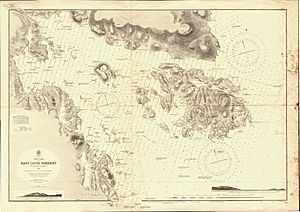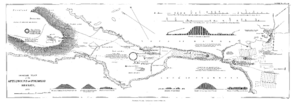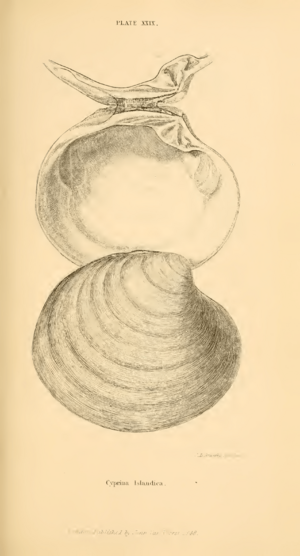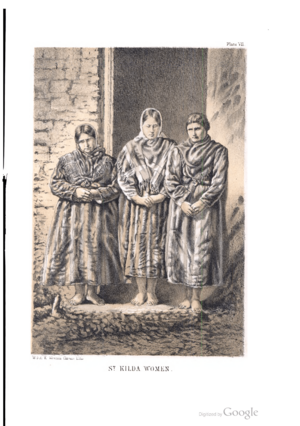F. W. L. Thomas facts for kids
Frederick William Leopold Thomas (born around 1812, died 1885) was a naval officer, a photographer, and a historian. He is well-known for mapping parts of Scotland and for taking the very first photographs of St Kilda, a remote island group.
Contents
Life of Frederick Thomas
Frederick Thomas was born around 1812. His father, George Thomas, was also a Master in the Royal Navy. In January 1827, Frederick joined his father's ship, HMS Investigator, which was used for surveying.
He passed his exams in 1835. He worked as an assistant surveyor on the Investigator and later on HMS Mastiff, both under his father's command. In 1841, he became a Lieutenant and took charge of a ship called the Woodlark.
He was promoted to Commander in 1860. He then retired from the Navy in 1864 with the rank of Captain. Frederick Thomas married Frances Sarah Bousfield on December 2, 1841. They had one son who sadly passed away in 1850. Frederick Thomas died in Edinburgh in 1885.
Mapping Seas and Land
Thomas worked as a hydrographer, which means he surveyed and mapped bodies of water. Most of his work was done in Scotland. He started by helping his father in Orkney, and he continued this work after his father passed away.
Later, he mapped areas in the Firth of Forth and the Western Isles. His surveying led to at least 15 detailed sea charts and many helpful guides for sailors.
Besides mapping the seas, Thomas also did important work on the history and ancient sites (archaeology) of the northern and western islands. He didn't do much digging, but he carefully surveyed and recorded many old structures. He wrote several papers about his findings. For example, in 1851, he created the first detailed map of the ancient burial mounds, standing stones, and other structures around Stenness, Orkney. He also described unique buildings like black houses, beehive houses, and brochs in the Outer Hebrides.
Studying Nature
Thomas was also an important naturalist, someone who studies nature. He mainly collected zoophytes (like jellyfish and corals) and molluscs (like snails and clams).
His collected specimens are often mentioned in important books about these creatures. He was known for carefully noting where and how deep he found his specimens. Many of the things he collected were rare species, which shows he knew a lot about the more common ones too.
Learning About Island People
Thomas was interested in the people living on the islands, not just the old ruins. He noticed that some beehive houses in Lewis and Harris were still being used by families during the summer. In other parts of Scotland and Ireland, these types of buildings were no longer lived in.
He wrote about how people lived in these houses. He also shared old legends connected to them, like stories about the shape-shifting Each-uisge or water horse.
In 1863, while on Lewis with another historian, Arthur Mitchell, he met a stone-breaker eating from a traditional clay pot. They then studied how these pots, called "craggans," were made and used. Thomas also collected traditional songs and stories about old clan battles.
In 1857, his wife Frances traveled with him to Harris, where they lived for a while. She was very moved by how poor the islanders were, especially because they were so isolated. Frances realized there could be a demand for wool products on the mainland. She first helped promote knitted stockings. Then, with Lady Dunmore, she helped create a market for Harris Tweed.
In 1860, Thomas sailed to St Kilda with Captain Otter on HMS Porcupine. While there, he took the earliest photographs ever taken of St Kilda. He also met a local minister, Mr. Kennedy, and asked him for information about the island's history. Mr. Kennedy's niece, Anne Kennedy, sent a detailed reply with many interesting facts.
Groups and Societies
Frederick Thomas was a member of the Photographic Society of Scotland. He was also part of the Society of Antiquaries of Scotland, a group that studies ancient history and artifacts.
Modern Recognition
In 2004, a television show was broadcast on Grampian Television. This documentary used Thomas's photographs from 1860 to tell a story.






